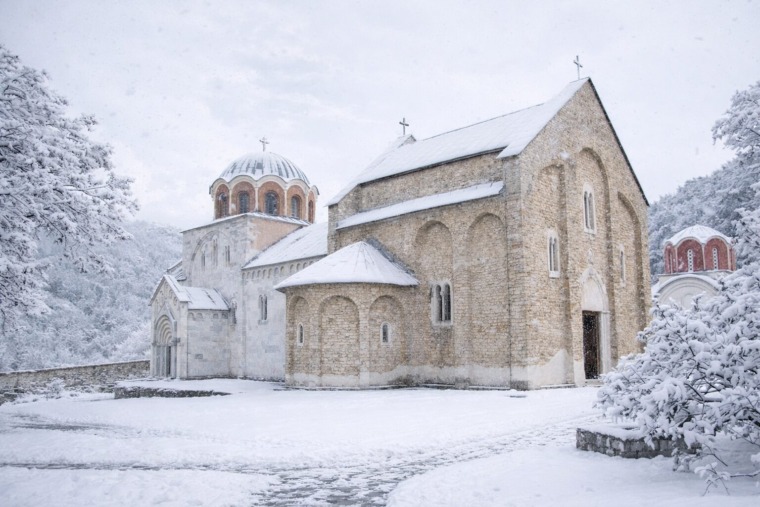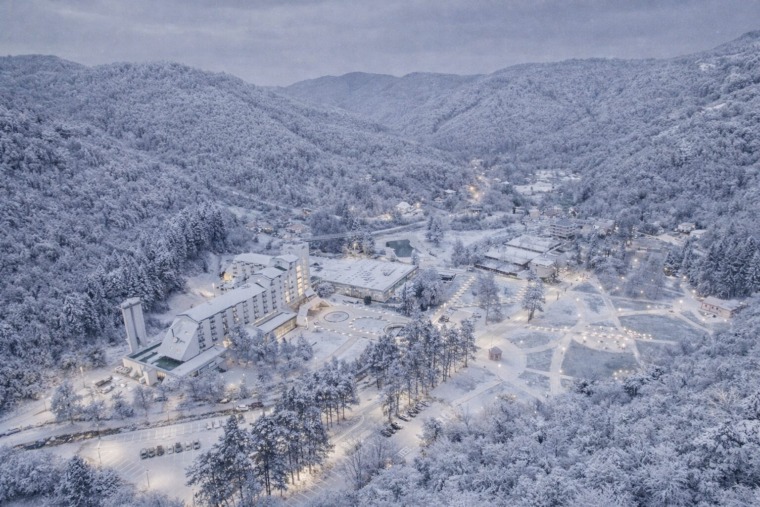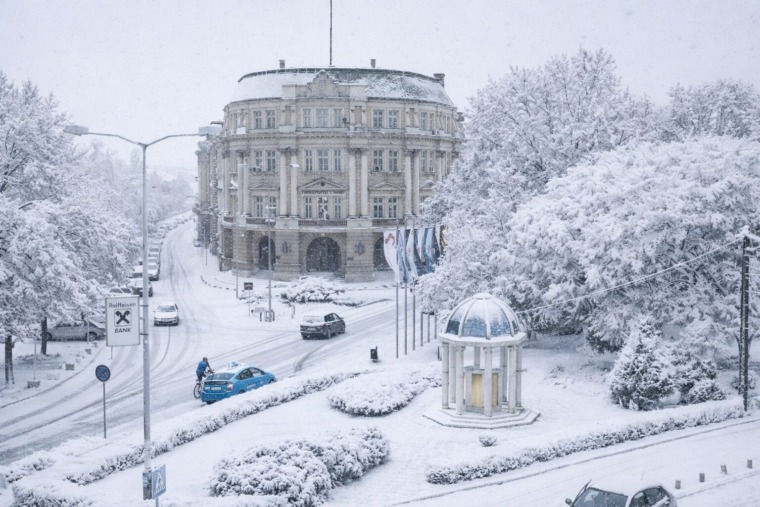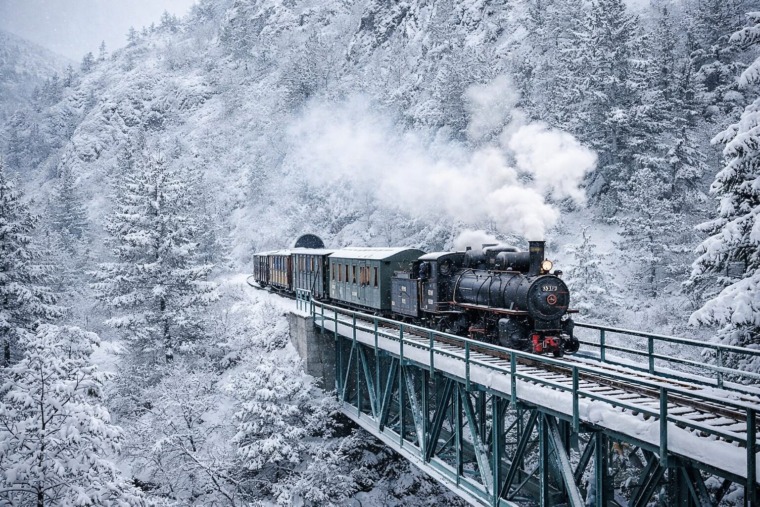

The best way to get to know a city, to feel its spirit and breath is to go on foot. As such, we suggest you tour Belgrade with an easy-going stroll taking in four of the city’s many museums: the Residence of Princess Ljubica (Konak kneginje Ljubice), the Paja Jovanović Museum, the Ivo Andrić Museum and the Jovan Cvijić Museum.
[doptg id=”18″]
THE JEWEL OF BALKAN ARCHITECTURE ON THE DOORSTEP OF EUROPEAN BAROQUE [doptg id=”18″] The residence of Princess Ljubica is one of the few surviving buildings from the reign of Prince Miloš Obrenović (1783-1860). Built in 1831, the residence was then inhabited by the wife of Prince Miloš, Princess Ljubica, along with their sons Milan and Mihailo. Today the palace is a museum with a permanent exhibition entitled “Interiors of Belgrade houses from the 19th Century”. Through changes to the styles of the home interiors of ruling and famous Belgrade families from the 19th century, you will be able to trace the development of the modern Serbian state and Belgrade, from an eastern provincial town to a modern European city.
Coffee with Princess Ljubica “Coffee with Princess Ljubica” is a programme of the museum of the City of Belgrade, which sees us present the residence of Princess Ljubica and life in Belgrade. The curator of the City of Belgrade museum, dressed in attire from the period of Princess Ljubica, as the hostess of her palace, awaits guests. With coffee and the best homemade turkish delight, accompanied by basic historical stories, you will learn interesting details about the private life of the royal family.
The oldest room is that of Princess Ljubica, complete with furniture and furnishings typical for Belgrade homes from the first half of the 19th century: Turkish-style corner seating, dining table, low-lying coffee table, a brazier and Turkish dishes. Next to Ljubica’s room are a small and a large hammam (communal bathhouse). The small hammam is decorated in a neo-rococo style and is the only painted room in the residence. Other interior sets comprising the permanent exhibition belong to styles that arrived in Serbia from central and Western Europe during the 19th century.
THE LUXURIOUS STUDIO OF SERBIA’S MOST FAMOUS PAINTER
Painter Paja Jovanović (1859-1957) enrolled at the prestigious academy of Fine arts in 1877. in Vienna. After graduation he travelled extensively and worked for gallery owners in Paris and London. He was selected to become a member of the Serbian Royal Academy in 1888. During his long artistic career, Jovanović achieved extraordinary success with his historical compositions (the migration of the Serbs, the declaration of Dušan’s Code etc.), genre scenes (decorating of the Bride, Cockfight, Fencing etc.) and a large number of portraits of famous personalities (King Aleksandar Karadjordjević and Queen Marija, Mihajlo Pupin etc.). He also tried his hand at religious art, painting iconostases in the churches of Dolovo and Novi Sad. The Paja Jovanović museum is located at 21 Kralja Milana street. The museum preserves 211 of his artworks (paintings, drawings, photographs), as well as Jovanović’s painting utensils, personal documents, certificates and medals, notes and personal correspondences. The permanent exhibition of the Museum displays a Neo-renaissance portal and lounge in the style of Louis XV, which were relocated from the artist’s studio in Vienna.
HOME OF THE GREATEST SERBIAN WRITER, NOBEL PRIZE LAUREATE
The Ivo Andrić Memorial Museum, dedicated to this most famous Serbian writer, is located in the apartment where the writer lived and worked. Andrić (1892-1975) won the Nobel Prize for literature in 1961, but he wrote his most important novels (the Bridge on the Drina, Miss and the Days of the Consuls) in Belgrade during the Nazi occupation of 1941-1945. The museum has preserved the authentic look and layout of the lobby, lounges and Andrić’s study with its rich library. The rich collections saved in Andrić’s legacy include valuable examples of period furniture and applied art from the 18th and 19th centuries, paintings, watercolours and drawings of famous . The rest of the adapted residence’s space is home to the permanent exhibition presenting a concise chronological life and creative opus of the Nobel laureate, writer and diplomat.
THE HOUSE OF A GREAT SERBIAN GEOGRAPHER & ADVENTURER

The Jovan Cvijić Memorial Museum is located in the house where this great geographer, and one of the greatest Serbian scientists, lived and worked. The house, built in 1905 according to the designs and desires of Cvijić himself (1865-1927), lies in Belgrade’s Kopitareva gradina neighbourhood, which had been the cultural and historical heart of the city centre for more than a century. Cvijić’s house, with a garden of outstanding beauty boasting rare plant species, still reflects the spirit of the early 20th century.
Cvijić, who had a sense of art and modernism, hired dragutin Inkiostrije Medenjak to fit the entire interior of his home, with every detail designed in the secessionist style, then very popular in Europe. Here the style is enriched by elements of Serbian national applied art. Authentic features are also maintained in the lounge and the room of Ljubica, Cvijić’s wife. the rest of the house displays details of Cvijić’s life, his numerous travels and the research under- taken by this great scientist and adventurer.
CITY TOUR
The Museum of the City of Belgrade has marked this occasion by printing a leaflet-guide which, alongside photographs of venues and exhibitions, offers suggested times to visit each museum and a pedestrian route across the city, with an overview of the most important buildings of Belgrade that you will pass over the course of the three-hour tour. It is recommended that your tour start at the Residence of Princess Ljubica at 12 noon, where you will find professional guidance through the exhibitions every day. Tickets for the tour programme, which includes access to all four featured museums can be purchased at the box offices of each of these museums.
Author of the article: Dragana Marković
Related Articles


From Fireworks to Family Dinners: New Year’s Eve Across Serbia
December 31, 2025
Kuršumlijska Banja: Serbia’s Quiet Winter Spa Escape
December 30, 2025
Novak Đokovic Receives Special Globe Soccer Award in Dubai
December 29, 2025





